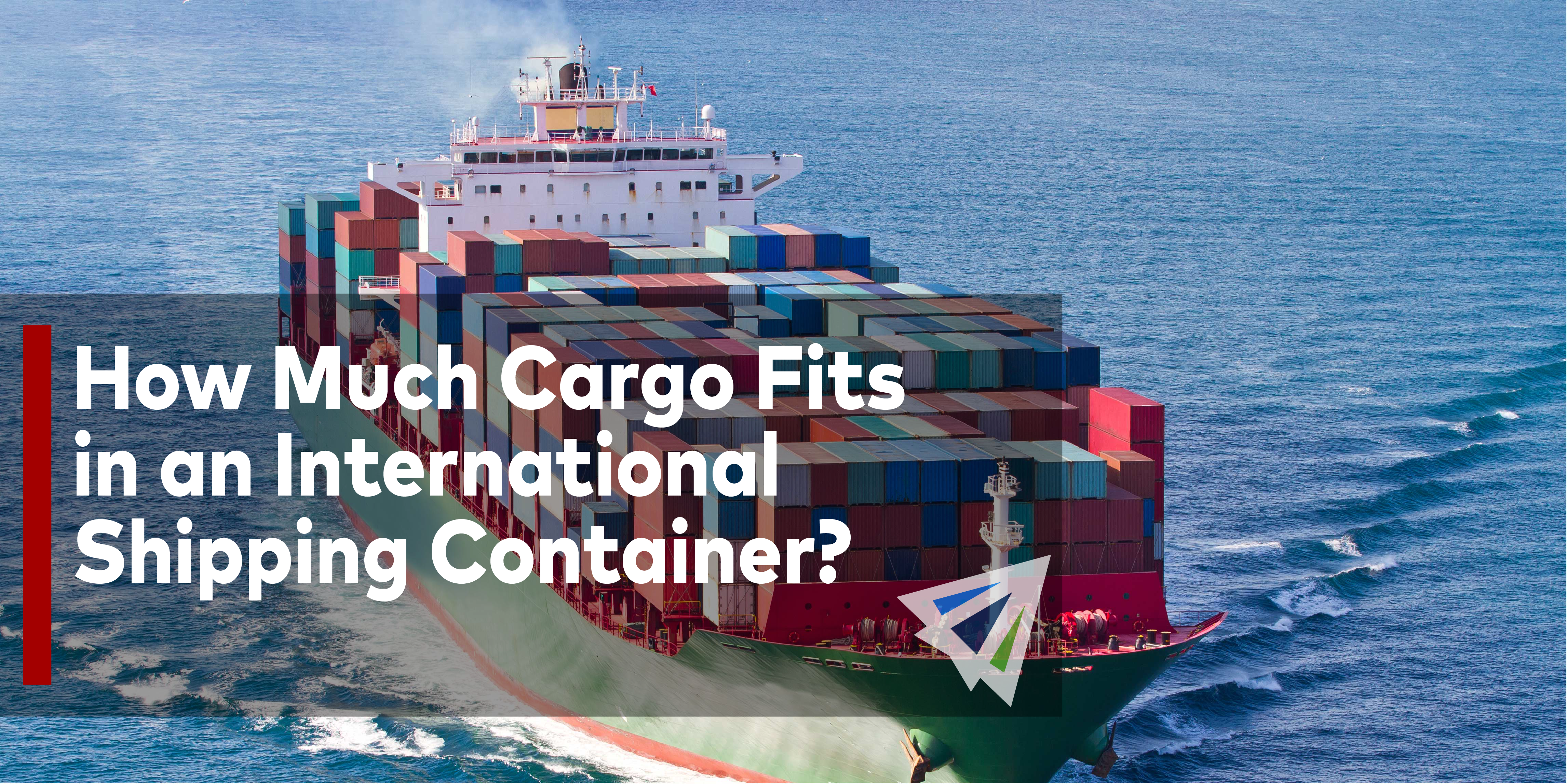Unless you’re shipping small parcel shipments, international shipping is all about space and finding the most efficient and cost-effective methods for getting large amounts of cargo overseas. Unfortunately, when it comes to international shipping, capacity can become an issue. If you’re planning on shipping large amounts of cargo, there’s a chance you’ll end up hitting the limitations of some (or all) standard international shipping containers. If that’s the case, you should be well aware of what your options actually are.
International Shipping Container Capacity: How Much Cargo Can Fit?
If you are planning to ship internationally for the first time in the near future, or have been shipping for a while and are wondering what the maximum capacity is, here’s a high level overview:
Capacity is defined in two ways in international shipping. Firstly, container capacity can be met by means of volume – i.e., the size of the container. A container is a given size, and if your cargo can’t fit within those dimensions, tough luck – you’ll need to find a larger container or ship break bulk.
Secondly, container capacity can be met by means of weight. Different shipping containers have different weight capacities (fun fact: often larger containers have less weight capacity than smaller containers, as the structural integrity is lower in larger containers than small ones.) Containers are limited by capacity for a few reasons. Obviously, the structural integrity of the container is one of them – you don’t want a container folding in half while being loaded onto a vessel. But container capacity is also limited by weight to keep vessels such as trains, steamships, and semi-trucks from getting overloaded.
Here are some general guidelines regarding international shipping container capacity:
Dimensional Restrictions: Standard 20’ & Standard 40’ International Shipping Containers
Although there are many different types of containers, such as all highlighted in this document, two of the most common container sizes are 20’ and 40’ standard shipping containers.
20’ standard international shipping containers are the most popular shipping container option, as they are easily available and frequently used for inland transport on trains. The dimensional restrictions of 20’ standard international shipping containers are as follows:
226” x 94” x 94”
Although, you won’t be able to use than entire space, as you have to get it through the door, and the door on a 20’ standard international shipping container limits the entry size to 92” (W) x 90” (H).
A 40’ international shipping container has dimensions as follows:
475” x 94” x 94”
However, once again, the 40’ international shipping container’s loading dimensions will be different when accounting for the thickness of the door. Same as the 20’ container, the door makes the entry size 92” (W) x 90” (H).
Weight Restrictions: Standard 20’ & Standard 40’ International Shipping Containers
The weight restrictions on both standard 20’ and 40’ international shipping containers are pretty generous – most people won’t reach them unless you are shipping incredibly heavy equipment/materials.
For a standard 20’ international shipping container, the weight restriction is 62,236lbs, or 28,230kg. That’s quite the load for a 20’ container, so chances are you won’t reach it!
For a 40’ international shipping container, the weight restriction is 58,863lbs, or 26,700kg. Funny enough, the larger the container, the lower the weight capacity, as the structural integrity of the container is reduced as the length of the container increases.
What About Other Types of Shipping Containers?
There are so many different types of international shipping containers, so we understand the frustrations surrounding finding summaries of the dimensional and weight restrictions for each type of container. That’s why we built this International shipping container guide. We have highlighted many of the most common types of shipping containers and their dimensional/weight restrictions to make it easier for you to figure out which container is right for your company!
Otherwise, if you still have questions, please don’t hesitate to reach out to one of our team members! We would love to talk to you about your shipping needs and help you find the right container for all future shipments your business may have!
